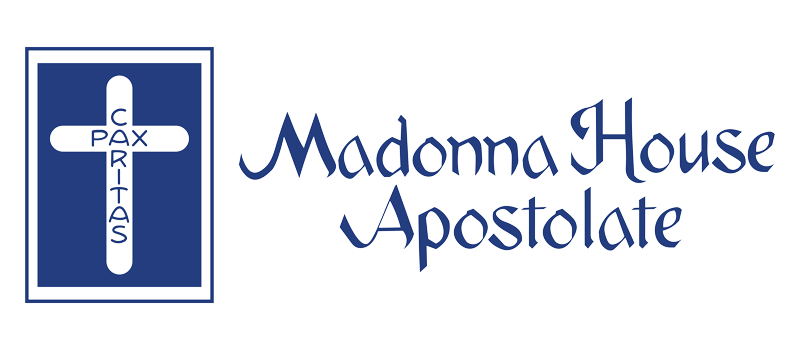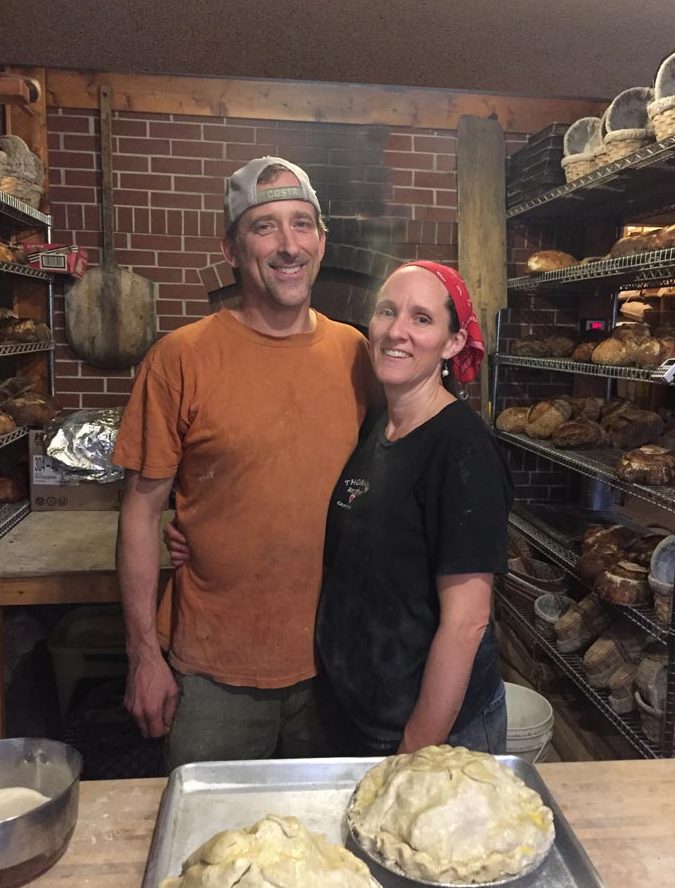This content has been archived. It may no longer be relevant
Recently, as I was walking out the door to go on a silent retreat, my husband handed me the most recent edition of Restoration. As I drove toward the retreat cabin, feeling exhausted and depleted (it had been over a year since my last silent retreat), the newspaper traveled alongside me on the seat like an old friend.
Once I settled into my retreat, I slowly read through the paper savoring the articles and insights it contained. As has happened before, a surge of gratitude swelled in me.
My first exposure to Madonna House came when I was eleven and my family traveled from Michigan to Combermere to attend Cana Colony.
There Kathy Rodman, one of the staff for that week, helped wash and dry the piles of dishes from supper each night. Her quiet joy and presence, as she worked alongside us children each evening, slowly worked on me over the course of the week.
I came from a large family without a dishwasher, and until then I had loathed dishwashing. Rubbing shoulders with Kathy in the kitchen changed my whole disposition toward dishes.
From then on, I actually began to enjoy dishwashing and began to see that it was a way I could be of service to my family and others. I started to appreciate the transformation that occurs when a huge pile of dirty plates and pots is made into an orderly and clean arrangement in the drying rack.
As a college student I read Fragments of My Life (given to me by my mother) Catherine Doherty’s story and her willingness to be guided by the Spirit inspired me deeply.
Two years later, while on retreat during our winter break, I heard the Spirit inviting me to take a leave of absence from college so that I could visit Madonna House.
Despite some trepidation, I made arrangements with the college, placed my things in storage, and headed for the Greyhound Bus Terminal in Detroit. I was 19 years old.
I arrived in Combermere on a Tuesday afternoon in February and was greeted at the bus by Mary Davis who was dressed in a work coat and boots.
From the first moment I encountered Mary, I loved her deeply wrinkled face that spoke of a life of hard work, prayer, and authenticity. But she was not the sort of person I had expected to meet me at the bus.
I had expected someone chatty and “nice,” not someone who hardly spoke as we made the drive up the snowy roads toward the main house. Yet Mary’s quiet, sturdy presence invited me into a deeper space of hospitality than I had yet experienced in my life.
I somehow knew that whatever I encountered at Madonna House was going to lead me into the depths of myself, if I had the courage to follow.
To my great joy, my first work assignment was in the wool room with Mary Davis. After hours of silent working alongside Mary, one of Catherine’s sayings gained new resonance for me. “What you do matters—but not much. What you are matters tremendously.”
I saw that Mary was unequivocally and unapologetically herself. She possessed a quality of being, rooted in the source of all being, or what the poet Gerard Manley Hopkins refers to as “the dearest freshness deep down things.”
I believe saints have this deep freshness—and I discovered it in more than a few people at Madonna House.
At first, I was a bit shocked by the robust personalities I encountered there. Some part of me still believed the lie that God wants us to be less ourselves as we grow closer to him. But the longer I stayed, the more fully I began to see that, as Catherine stated, “The only tragedy is not to be a saint.”
Because saints are truly alive. The life of Christ in them frees them to be their true selves. The women and men of Madonna House were some of the most free and alive people I’d ever met—as evidenced by the abundance of laughter, creativity, art, and music within their community. It was a place of both lightness and profound depth.
Of course, there were conflicts too; I witnessed several heated interactions. But where there is commitment to the journey inward, and to The One leading the journey, there is real life and real fruit.
I experienced many graces in my four-month stay at Madonna House in the late ‘90s. One significant grace came on an afternoon when I was enjoying tea time at the main house.
I observed two older women members (they were quite old) talking with one another in the little library. I watched them and considered how many years they had been there doing the duty of the moment day in and day out—faithfully praying and working and practicing hospitality toward guests like me.
I saw clearly that the graces I was experiencing were directly connected to the daily fiat (surrender), these elderly women had been making for years and years. These women were laying down their lives to make a path upon which I, and others, could walk toward the heart of God.
I felt such deep gratitude toward them in that moment and toward the whole Communion of Saints whose lives create these footpaths to God’s heart.
I now have my own vocation as a wife, a mother, a baker, and a poet. After nearly twenty years of marriage and running a business with my husband, I know how difficult it is to stay committed to one’s vocation. How difficult it is to keep a supple and open heart—to say “yes” through the ups and downs of every day.
My husband and I have had a child die, we’ve both dealt with depression, and we have struggled to juggle the needs of family, business, and our homestead. But every time I receive Restoration in the mail, and read about the fiats made by each of the members wherever they are, I experience, again, that a path to God’s heart is being laid for me to walk upon.
In light of this, my greatest desire is to live a life that provides this path for others—a truly fruitful life—even if my life is small and hidden, which it mostly is.
I want to be like Kathy Rodman and Mary Davis and so many others in Madonna House whose fiat leads to “the dearest freshness deep down things,” to the source—the heart of God. Thank you, thank you, thank you all for your perseverant yeses.
To read about the life of Mary Davis, see “Memories of a Pioneer,” on p. 4 of our December 2022 issue or online at our website: madonnahouse.org/restoration





